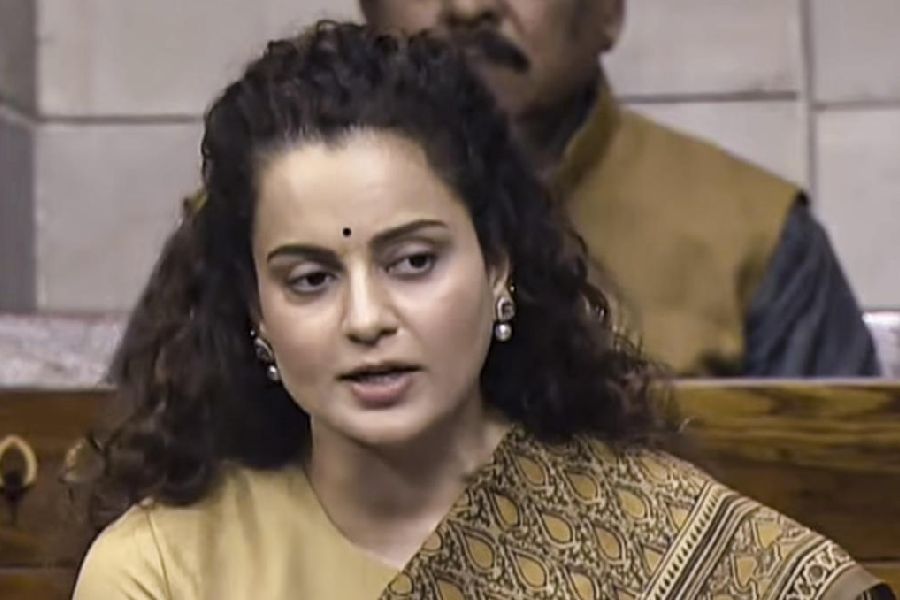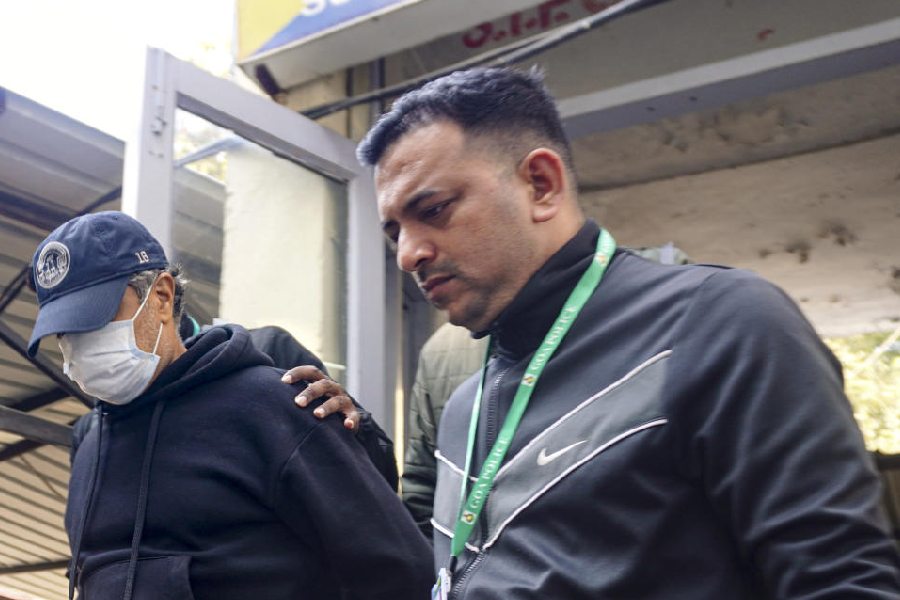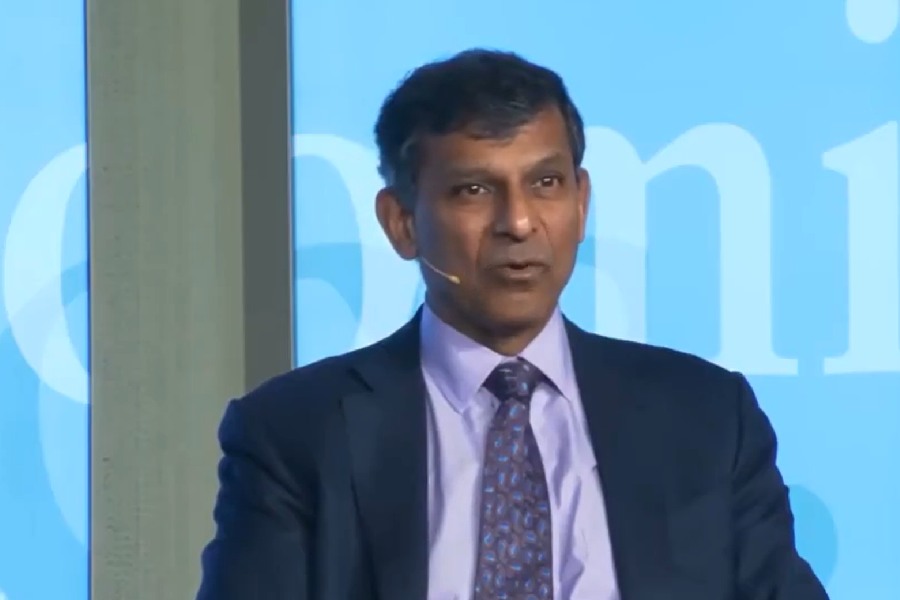The margins do a lot. They can define the centre.
Sameer Sen, the framer who has worked with the stalwarts of the art world, has made this the foundation of his work. Sameer, 62, runs Tara Glass Syndicate, Art Framer, in Kalighat, not far from the landmark Kali temple.
The frames that he makes are simple and elegant and have character. He generally uses a slightly broad wooden frame with some depth and leaves a generous, emphatic margin around the image. The mountboard is chosen after much deliberation, so that it goes with the colours and other details of the painting.
The importance that he gives to the margins, says Sameer, a gentle man who loves to converse, is perhaps one reason he has had the opportunity to work with the best-known artists of our times: from Sunil Das to Paritosh Sen to Dharmanarayan Dasgupta, with whom he worked extensively. He has framed the paintings of M.F. Husain, Ganesh Pyne and Ganesh Haloi, as well as several of Raghu Rai’s photographs.
A masterpiece cannot be improved. But it can be given a better display. “That which people will stop to see is a painting,” Sameer says.
His frames perhaps caught the eye because socially and culturally, we often do not, or cannot, value space in this crowded part of the world. This can spill over into our aesthetics, into home decors, the way we dress, and the way we frame images. Pictures of our gods and goddesses, especially, still remain cramped in narrow frames, though, ironically, freedom and respect for space were at the core of Indian design and thinking once – and still are, in some quarters.
Framed pictures of deities, in fact, were the starting point for Sameer. Tara Glass was started in 1962 by his father, who had arrived in Calcutta from Noakhali in East Pakistan (now Bangladesh) in 1950. At the beginning, like numerous others in the area that derives its identity from the Kali temple, Sameer’s father would sell pictures of gods and goddesses, fixing them inside readymade frames.
“My journey began in 1980, when I walked into the shop holding his hand,” says Sameer. Soon things would begin to change for the shop. Artists who lived in south Calcutta began to drop in at the store, from the eighties, encouraged by its genial atmosphere.
One of the first artists to visit the shop regularly was Sunil Das, who is remembered for his painting of horses, says Sameer, “but was also a great experimenter”. Artists Partha Pratim Deb and Indu Rakshit and art patron Lady Ranu Mukherjee were other visitors.
Paritosh Sen was another frequent visitor. Through Sameer’s elder brother, Prabeer, also an artist, whose contribution Sameer cannot stress enough, many artists came to know about the shop.
Through the eighties, the shop’s reputation grew. Sameer remembers the first painting of Paritosh Sen that he framed.
“It was a large painting of a vulture,” he says. He had decided to use black cloth on the mountboard, for if he had to use the black paper he had marks would have appeared. The use of the cloth was appreciated.
Sameer would get to know Sunil Das and Paritosh Sen very well.
“They had formidable personalities, but once you got to know then, you would see how gentle they were really,” says Sameer. He was also close to the group of women artists, called “The Group”, comprising Meera Mukherjee, Shanu Lahiri, Karuna Saha, Santosh Rohatgi and Shyamasree Basu. The last four were painters; Mukherjee a sculptor.
“Artists were everything to me,” he says. Their art was his training and they were like guardians.
“I would not hesitate to call them if I was confused, to ask what shade I was to use for backdrop or frame,” he says. “I miss them.”
In the late eighties, he and his brother Prabeer began an exhibition, ‘Shilpa Sarit’, with paintings framed at his store. Both well-known and younger artists would be featured. They would not make any profit from the sale of these pictures. But the exhibition, an unusual platform hosted by framers for artists, had to stop after a decade or so.
Sameer wants to revive the exhibition again, because he does not give up. That has something to do with his other training — on the football field.
Before he joined his father’s shop, he was a football player, playing for Aryan Sports Club and Aikya Sammilani, then second-division clubs. He was coached by Achyut Banerjee, whom Sameer recalls with great respect.
“The football field gave me the spirit to fight. But the artists also have told me always, ‘Keep working. Don’t give up’.”
At that point you realise that asked to speak about his work, Sameer has only talked about the people who have shaped him, hardly about himself. He likes to stay in the margins too.
Meanwhile, even during lockdown, his shop is buzzing. Peeping from behind stacks of frames and mountboard, is a mixture of high art and not-so high art as paintings by Suhas Roy, Bijan Chowdhury, Subhas Karmakar and Manoj Dutta stand side by side yet another patachitra print or Jamini Roy copy. Sameer focuses on art, but cannot always say no to requests to frame the more mundane stuff. The framed pictures of deities that hang on the wall are his own.
Three of the six young men who work for Sameer are present. He calls them his “satirtha”, colleagues. They are very close to him.
He does want a few things for himself, he says. He wants his work to continue. A bachelor, he has raised his nephews like his own sons. He wants one of them to take over from him.
And he wants his colleagues to learn from the shop and be able to start their own business. “Some of my former colleagues already have. I want to help to set them up. Then this place will be something of an institute.”
A lot can happen on the margins.










